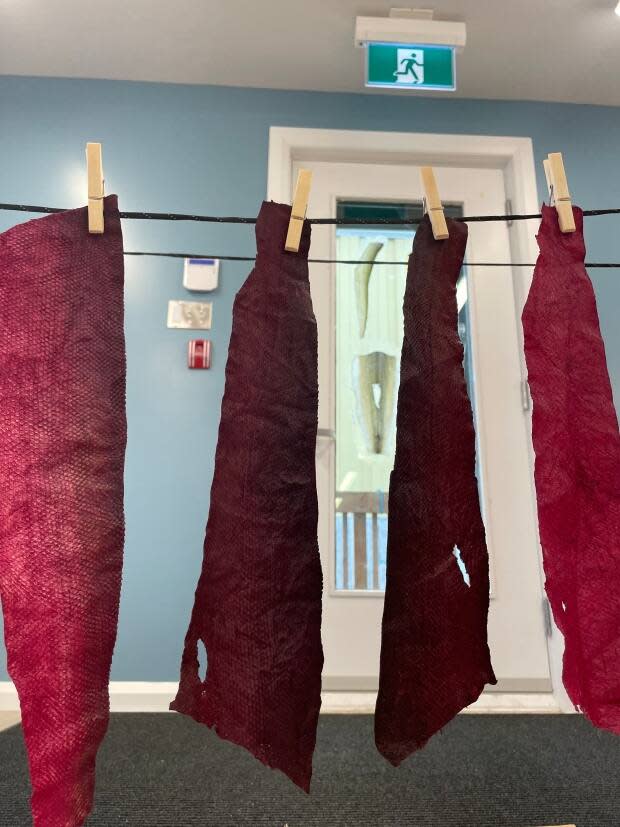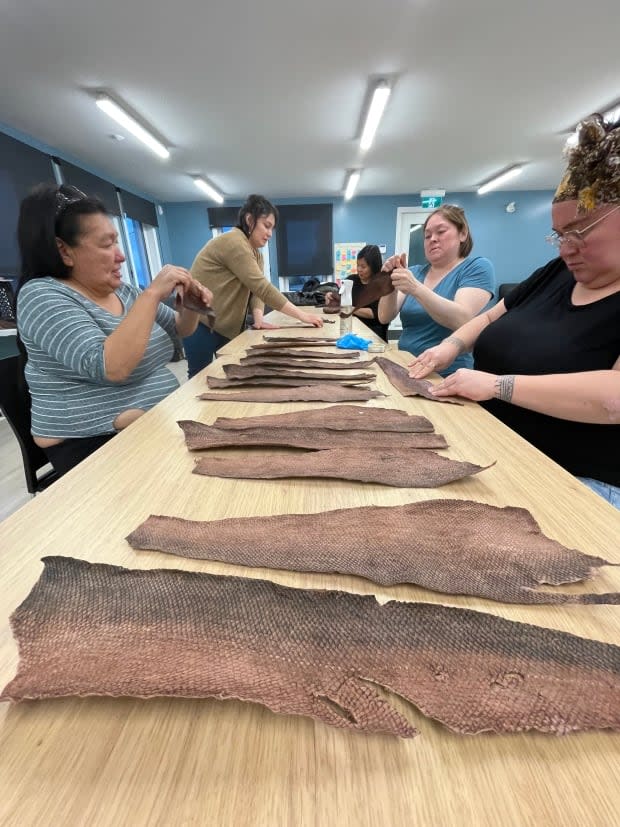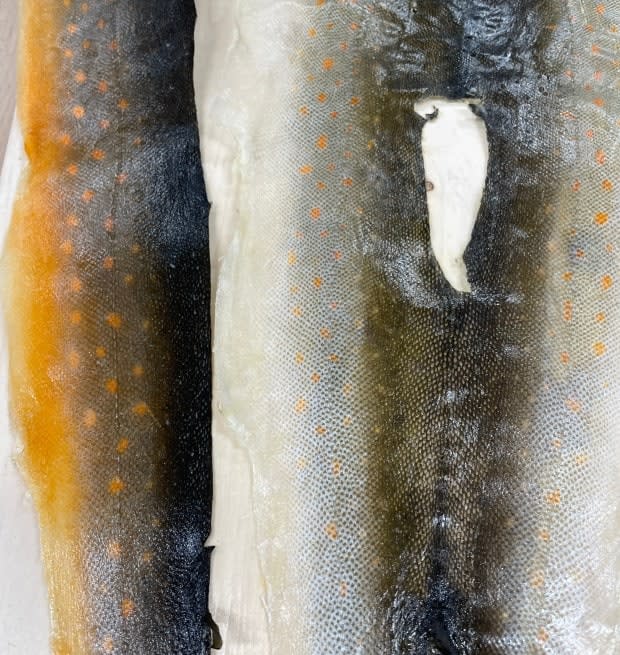Puvirnituq students turn slimy, smelly fish skins into strong, supple leather

It's a material many people never encounter outside of museums or cultural gatherings — a strong, supple leather decorated with the distinct pattern of fish scales.
As a group of seven women in Puvirnituq, Que., found out last week, thanks to a workshop hosted by Kajusivik Adult Education, all it takes is a few days soaking in a tea bath for fish skin to lose its slime and transform into a beautiful material that can be used in sewing and crafts.
"It's such an accessible way of making leather from something that often gets wasted," said Janey Chang, who led last week's workshop on fish skin tanning in the Nunavik community. "I love that."
Importantly, the skin also loses its fishy smell once it soaks up the tannins and plumps up into leather. It's reminiscent of snakeskin, if anything, with the scale pockets forming delicate and intricate patterns on the skin side.
"It really is a beautiful, beautiful leather for so many things," Chang said.
Some students brought Arctic char to the class — the so-called "sexy fish," Chang laughed, since it has such lovely colours — and others brought lake trout.

"We have a lot of fun while we're doing this," Chang said.
Over the course of the week, Chang led students through the various steps: skinning, scaling, and then soaking the skins in progressively stronger tannin baths, before oiling and drying them. The resulting skin would be stronger than deer leather of the same thickness, she noted.
The skins can be dyed using other tannins or natural ingredients to produce bright reds, purples, blues and yellows. Some students turned their leather into beaded earrings and jewelry after they finished.

The method itself is called bark tanning, and it's so easy it can be done in your kitchen or living room — or your camp, if you're out on the land. You can boil just about any plant that has tannins in it, with tree bark generally being the most tannin-rich, and use the resulting liquid as a tanning solution.
Chang and her students used willow bark, black tea and oak galls. She said they also mixed it up by experimenting with beluga oil — oil tanning being another method of processing skins — in an effort to discover what would have been used from the land around Puvirnituq to make fish leather long ago.
"The main focus is really to bring an old skill back into the hands of Inuit people who have some very distant memories of the use of fish skins," Chang explained.
"In doing the work with our hands, sometimes the memories come back easier."

Chang, who lives in Vancouver, is Chinese. Her interest in fish skin tanning came about as a way to connect with her own ancestral heritage and the tradition of fish skin tanning in northeastern China.
"It's very special and important to also help with that sense of identity, that cultural identity," she said.
Before Puvirnituq, Chang ran a similar workshop in Salluit. In the spring, she taught students in Inukjuak and Kuujjuaq as well.
"It would be an absolute dream to go to all of the communities to share this skill with everyone who wants to learn it," she said.

